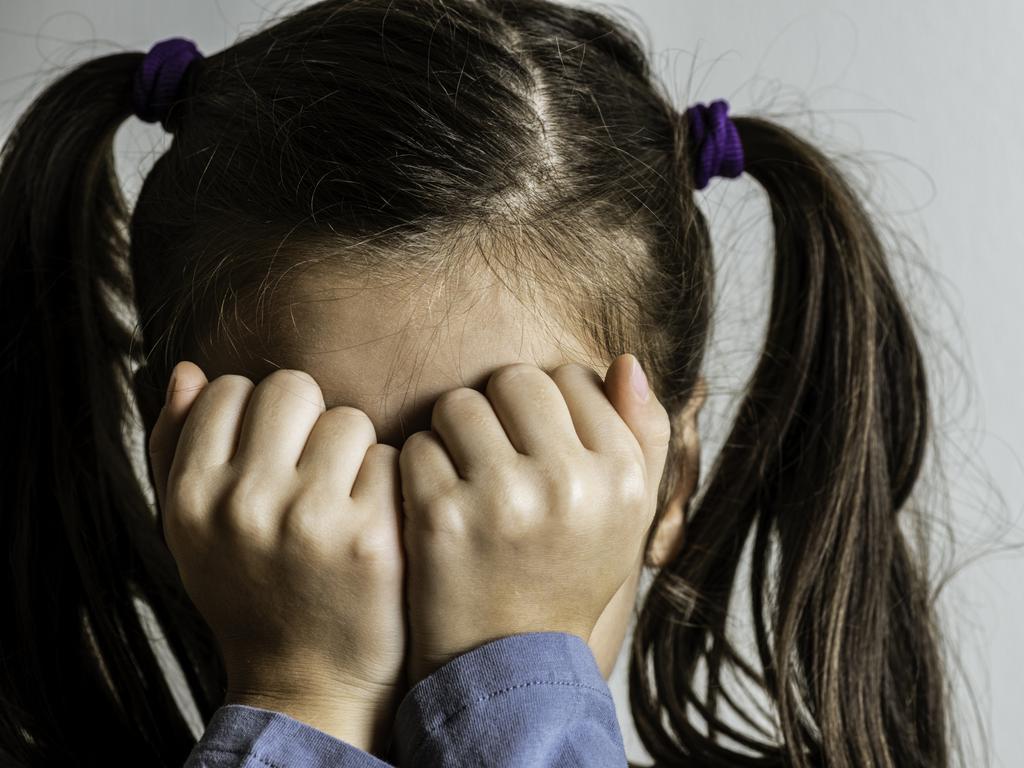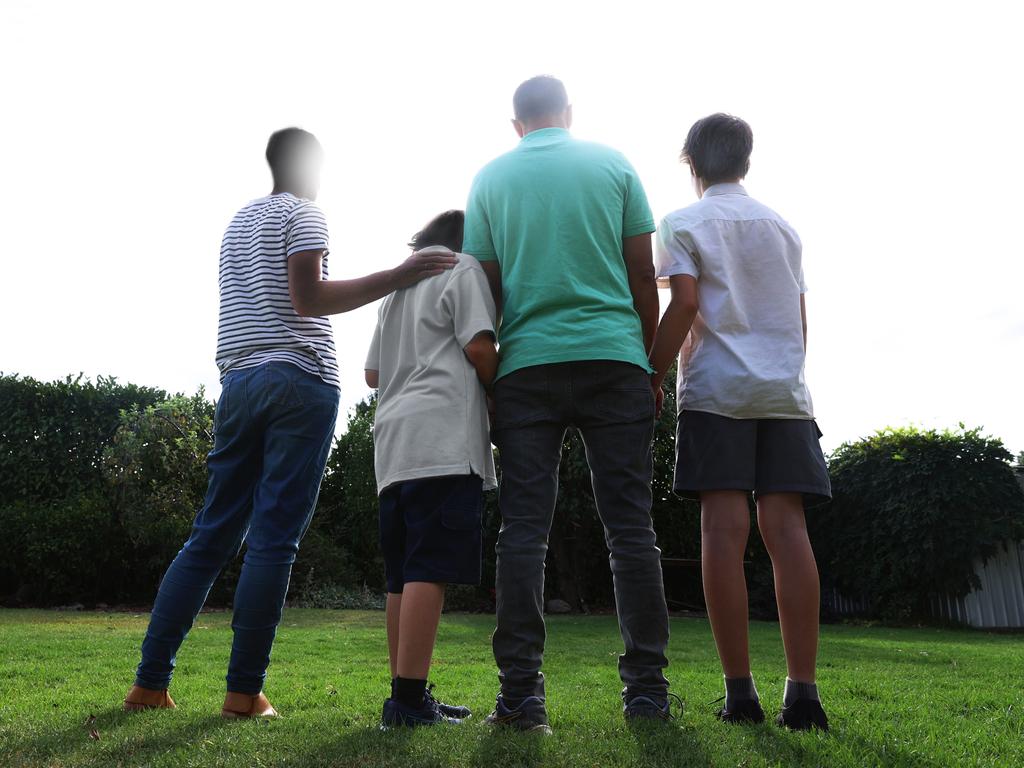Unfolding tragedy at heart of Indigenous baby’s death
Violence, neglect, drug use … welfare authorities knew of the dire family life of a baby girl in regional NSW. Why couldn’t they save her?

During the brief, blighted life of a NSW baby girl known as ML, a dozen calls were made to a NSW government helpline to report safety concerns about the 17-month-old and her two older siblings.
Unsuitable housing, severe discipline, emotional abuse, neglect, domestic violence, and parental drug and alcohol abuse were among the risks that prompted people to pick up the phone and alert the Department of Communities and Justice.
The reports, outlined to an inquest, were disturbing. The father, Mike*, was assaulting the mother, Laila*, who was also reported for hitting one of her girls and injecting the drug ice in front of her children.
One of the kids had kicked the family dog to death. One complaint said Laila would go out drinking and leave the two older children to care for ML.
“Sometimes Dad hits Mum; well, a lot actually and it’s really bad. So we run away and hide at (a neighbour’s) house and she gives us lollies,’’ said one child quoted in a call to the helpline.
The children were at “very high risk for neglect and abuse”, according to a DCJ assessment completed just three months before ML’s death.
Clearly, these kids needed help. So too their Aboriginal parents, who had their own complex histories of neglect, trauma, and drug and alcohol abuse.
The family were known to police, schools and government agencies but the 48-page coronial report indicates that little was achieved to meaningfully improve the children’s lives or give ML a decent shot at reaching her second birthday.
Early one morning in November 2019, the toddler’s lifeless body was found on pillows next to Laila on the air mattress the family slept on. The cause of death was acute bronchiolitis caused by respiratory syncytial virus, the coroner found. RSV is a common virus that can cause serious infection in infants.
ML’s parents said she had appeared well the day before her death but for an episode of vomiting and diarrhoea. However, a pediatrician told the inquest that given the autopsy results he would have expected the little girl to have had a cough and respiratory distress as her condition deteriorated.
A witness who saw the family two days before ML’s death said she had a “severe croupy cough”.
“It is possible, for whatever reason, that either Laila and Mike did not realise the true state of ML’s health or were understating her symptoms in the day or days prior to her collapse,’’ the coroner said.
The cause of death was not the only issue in the inquest held over four days last August; deputy state coroner Joan Baptie wanted to delve into the contributing circumstances of family background and the response of various agencies over ML’s brief life.
“A combination of factors led to ML’s death, including unsuitable accommodation and the effects of ongoing domestic violence,’’ she said.
Family dysfunction and swamped case workers
Baptie’s findings, handed down in March and only just made public, paint a dire portrait of family dysfunction and DCJ case workers too inexperienced or overloaded to respond to cases that swamp their offices and helplines.

Workers would attempt to help the family but the inquest heard of staff turnover, poor case handover, and new risk reports being considered in isolation rather in the context of many other reports over years. “There was a lack of appreciation of risk and urgency,’’ one review noted.
Risk of serious harm reports that required 24- or 72-hour responses were not addressed till days or weeks later, or closed because there was no capacity to deal with them.
One caseworker recently out of training said she had a file load of 19 children at risk of serious harm.
Baptie said the case workers were chronically overworked and overwhelmed by their caseloads. “They appeared to be dedicated and hardworking individuals who were not receiving support from senior management in DCJ,” she said. “It is easy with hindsight to conclude that criticisms of individual staff explain the shortcomings of DCJ in ML’s case. The reality is that DCJ’s shortcomings involving other clients are, unfortunately, neither isolated nor unusual.”
The older two children were in the public eye at school and many of the helpline calls related to them.
“Just as (the siblings) were affected by the violence and its consequences, ML was too. She was not yet verbal but she too would have experienced her mother’s screaming when she was coming down from using drugs and the various forms of abuse and neglect,’’ one expert review said.
The inquest heard that violence marked ML’s life from her earliest days – police had attended 12 domestic violence incidents at the house in the months before and after her birth.
She was just three months old and in the arms of Laila when her father severely bashed her mother, a crime that saw him jailed for 18 months.
A year prior to the little girl’s death, a DCJ case worker observed their home to be squalid and infested with mice.
ML had not long turned one when her older sibling was hospitalised after attempting suicide.
Police visited the family two days before ML’s death but no one answered the door – they were called because Laila and the children were living with Mike in contravention of his parole conditions and an apprehended domestic violence order.
A DCJ report found the department’s assessments did not consider the cultural context of this Aboriginal family and their experience of government agencies.
The inquest heard Mike came to the attention of DCJ as an infant after a shockingly violent crime in his family caused him to be sent to live with extended family. It was later reported he and some of his siblings were the victims of sexual abuse from a person known to the family, and by age 11 he was dependent on drugs and alcohol and committing crime.
As a child Laila too was known to DCJ due to reports she’d been neglected and abused by her father, the inquest heard.
As she struggled to raise her own children, she worried that they would be removed by the state; stories of the stolen generations run deep through Indigenous communities, one worker said, and many Aboriginal people were frightened when DCJ workers knocked on their door.
Laila told the coroner: “I was scared of them removing my kids because I’ve had family members had their kids removed and not give them back to them, and I thought that was going to happen to me and I’ll never see my kids again.”
‘Further poor outcomes’ without reform
Baptie concluded that a number of personal and systemic issues failed ML. Her parents appeared to lack the insight that their personal choices were harming their children, she said.
Broad systemic changes were required by DCJ.
“These clearly include filling excessive staff vacancies, providing improved systems and training to staff and improving staff resourcing and policies’” Baptie said.
“Continuing with the same processes and practices will result in further poor outcomes for families and staff.”
A DCJ spokesperson said the NSW government was implementing significant reforms to the child protection system. Caseworker pay had been lifted to boost recruitment and retention, and a number of initiatives had been developed to address vacancies in the regional area where ML lived.
“DCJ is carefully considering the coroner’s findings and where any issues highlighted have not already been addressed, we will work to fix them,’’ the spokesperson said.
Mike did not participate in the inquest process but Baptie said Laila had made significant efforts to address her issues and was being assisted by an Aboriginal family service.
Laila told the court she wanted to “help other mums and dads and show them they have a voice and to use it. I was too afraid back then to speak up. I want to do some courses and help me get qualified to become that, and to be that motivation for other people”.
*Names have been changed
For help: Domestic Violence Helpline: 1800RESPECT; Lifeline: 13 11 14; Kids Helpline: 1800 55 1800







To join the conversation, please log in. Don't have an account? Register
Join the conversation, you are commenting as Logout